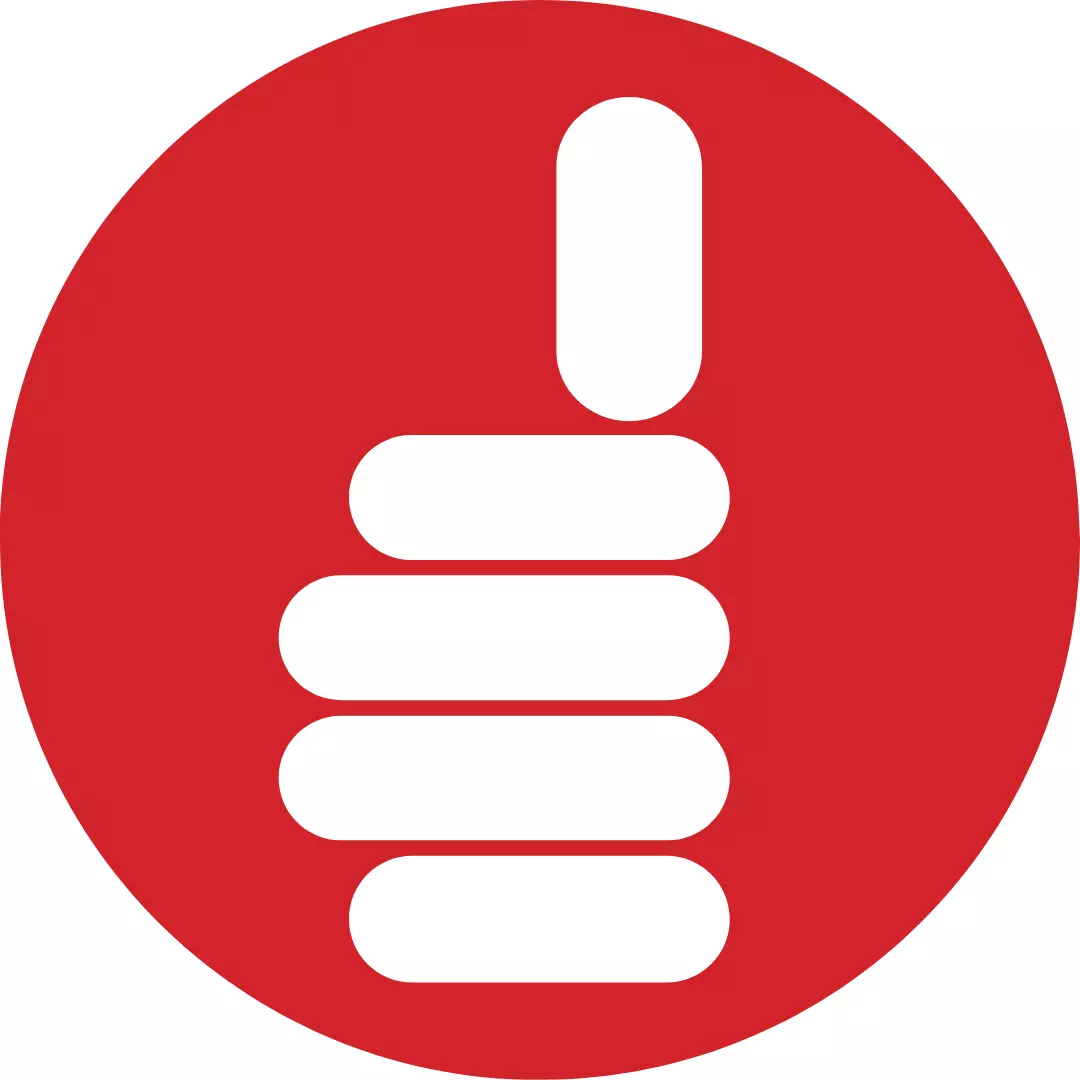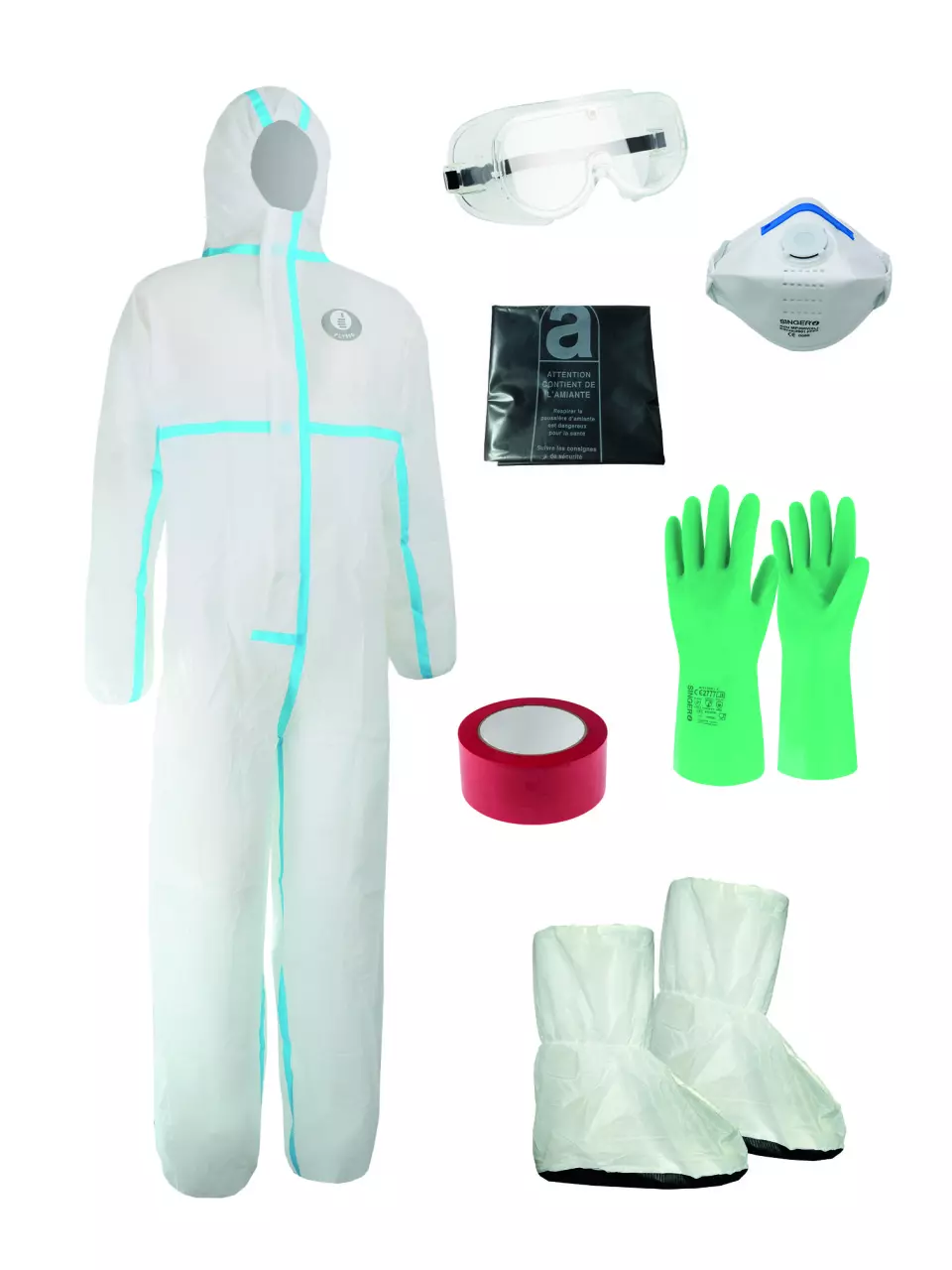Singer Safety Personal Protective Equipment Kit with Overall, Gloves, Mask and Goggles
SINGER Safety
visit storeProduct description
This disposable asbestos protection kit provides comprehensive safety equipment for light work in asbestos-contaminated environments. Featuring five essential protective items including goggles, respiratory mask, gloves, coverall, and overshoes, this kit meets multiple European safety standards for hazardous material handling. The complete package also includes adhesive tape and a specially marked waste bag for proper disposal of contaminated materials.
Product Features:
- Non-magnetic clear polycarbonate goggles (EVAMAS)
- FFP3 respiratory half-mask with exhalation valve and metal nosepiece (AUUMP300VSL)
- Nitrile gloves with cotton flocking interior (NIT1538)
- SMS non-woven fabric coverall with waterproof seams (PLY500)
- Polypropylene overshoes with elastic ankle and anti-slip PVC sole (AUUBOTTE2)
- Includes adhesive tape roll and waste bag with asbestos marking
Technical Details:
- Unsupported nitrile gloves with chemical resistance (EN ISO 374-1 AJKLMNO)
- SMS non-woven fabric at 55 g/m² for the protective coverall
- Complies with European Regulation (EU) 2016/425 on Personal Protective Equipment
- Type 5 and 6 protection (EN ISO 13982-1, EN 13034)
- Protection against radioactive contamination (EN 1073-2)
Recommended Applications:
- Designed for light work in asbestos environments
- Building maintenance activities
- Note: Higher protection equipment may be required depending on risk assessment and dust levels
EAN: 3660514205017, 3660514258761
Defines the overall's fundamental design (Regular, Insulated, Hooded, etc.), determining protection level, functionality, and suitability for specific work environments.
- Chemical Resistance
- Cut Resistant
- Respiratory Protection
- Water Resistance
- Slip Resistant
- Antimicrobial Protection
- Eye Protection
- Radioactive Contamination
- Hand Protection
Request a free sample
Test first and buy later. Visit any product page to request your free sample.
Standards and labels
EN ISO 13982-1:2004 is a European standard that specifies the requirements and test methods for Type 5 protective clothing designed to protect against airborne solid particles. It sets criteria for material resistance and construction to prevent penetration of hazardous particles such as dust, fibers, and powders. The standard ensures that the garments provide effective protection in industries where workers may be exposed to such particles, but it should not be relied upon for protection against liquid chemicals or vapors.
Test results
Airborne Solid Particle Protection Type 5EN 374-1:1995 is a standard that specifies the performance requirements and test methods for chemical protective gloves. It defines the minimum requirements for gloves to protect against chemicals and microorganisms. The standard includes test methods for permeation resistance, degradation, and penetration. Possible test results include pass/fail for each requirement.
EN 13034:2005 is a European standard that specifies the requirements and test methods for Type 6 protective clothing designed to provide protection against liquid chemicals. This standard sets criteria for the fabric's resistance to penetration by liquid chemicals and establishes guidelines for the overall design and construction of the clothing. It ensures that Type 6 protective clothing offers reliable protection for workers in industries where they may be exposed to liquid chemical hazards, but it may not be suitable for protection against airborne particles.
Test results
Liquid Chemical Protection Type 6EN 13034:2005 specifies the requirements and test methods for protective clothing that provides limited protection against liquid chemicals, designated as Type 6. The 'Type 6' classification indicates that the clothing has been tested and found capable of resisting light spray and minor splashes of liquid chemicals. This test method assesses the fabric's ability to prevent penetration from a synthetic blood solution sprayed at the garment at different angles and pressures, simulating realistic conditions where accidental chemical splashes might occur. Protective clothing that achieves this classification is essential for workers in industries such as chemical manufacturing, painting, or pesticide application, where there is a risk of exposure to harmful liquids but full immersion is not expected, thus enhancing worker safety by providing sufficient protection in low-volume chemical exposure scenarios.
EN 388:2016 is a European standard for measuring the performance of protective gloves against mechanical risks (abrasion, cut, tear, and puncture). The standard includes test methods and performance requirements for gloves to be considered compliant. Test results are reported using a series of four numbers, each representing the performance level achieved in one of the tests.
Test results
Abrasion Resistance Level 3EN 388:2016 is a European standard that provides guidelines for assessing the protection levels of gloves against mechanical risks, such as abrasion, cuts, tears, and puncture. The Abrasion Resistance Level 3 indicates a higher level of protection, signifying that the gloves can resist more intensive wear from rough materials. According to the standard, the abrasion resistance test involves rubbing the glove material against sandpaper under a specified pressure until it is worn through. Level 3 abrasion resistance requires that the gloves withstand 2000 to 7999 cycles of abrasion. This enhanced level of durability is appropriate for tasks involving more frequent or more intense contact with abrasive surfaces, such as construction work, woodworking, and handling building materials. Gloves with Level 3 abrasion resistance offer a robust barrier against wear, extending glove life and providing increased protection for the wearer’s hands, thus reducing the risk of injuries in more demanding work environments.
Tear Resistance Level 0The Tear Resistance Level 0 in the EN 388:2016 standard refers to the lowest classification for tear resistance performance. It indicates that the material did not reach the minimum threshold required to attain a higher performance level in the tear resistance test. In assessing this result under EN 388:2003, the test involves applying a force to a test piece of the material until it tears. This specific test measures how much force the material can withstand before it tears, and a Level 0 result shows very minimal or no resistance to tearing. For procurement professionals dealing with safety gloves or similar protective materials, understanding that a tear resistance rating of Level 0 suggests that these products are not suitable for working environments where resistance to tearing is critical.
Puncture Resistance Level 1The European standard EN 388:2016 addresses the puncture resistance of protective gloves, with puncture resistance classified from Levels 1 to 4. Specifically, a Level 1 result indicates minimal puncture resistance. This level of resistance is determined by a test involving a standardized stylus with a specified diameter and force. During the test, the stylus is pressed against the material with a force up to 20 Newtons to assess how well the glove can withstand penetration. A Level 1 rating signifies that the glove provides basic protection against small punctures or stabs, appropriate for areas with minimal risk. Practical implications for this test result suggest the gloves are suitable for light tasks where major risks of punctures are not anticipated, but are not adequate for handling sharp tools or heavy equipment where higher penetration resistance would be necessary.
Cut Resistance, ISO 13997 Level XThe standard EN 388:2016, specifically its segment referring to ISO 13997 test, is designed to assess the cut resistance of materials used in protective gloves. A result denoted as 'Level X' means that test is not performed and the cut resistance of the product cannot be guaranteed.
Cut Resistance, Coup Test Level 1The EN 388:2016 standard is dedicated to gauging the mechanical risks for hand protection where a Cut Resistance, Coup Test Level 1 indicates minimal resistance to cutting because material achieved between 1.2 and 2.5 cycles before being cut through during the test. It means that the product tested at this level offers basic protection against shallow cuts, suitable for tasks with low risk of cut injuries. The test method used involves a rotating circular blade under a fixed force making contact with the fabric or material being tested. The blade moves back and forth across the material until a cut-through is achieved. The number of cycles required to cut through the sample at a consistent speed determines the cut resistance, with Level 1 being the second lowest rating after level 0. Products at this level are applicable in scenarios where there are minimal hazards from sharp objects, hence ideal for light duties where there is no significant risk of deep cuts.
EN 149:2001+A1:2009 is a European standard for filtering half masks for protecting against particles and it is an amendment of EN 149:2001. It outlines additional requirements for mask design and performance testing. The mask must be able to filter a certain percentage of particles, have good breathability, and fit securely to the face. The test results shows how well the mask filters and how easy it is to breathe through, also it includes a test for the mask's ability to fit securely to the face. It also specifies the mask's ability to filter out specific airborne particles like dust, mist, and fumes. It includes additional requirements for the performance of the mask, such as the ability to seal against the face and the mask's durability.
EN 13688:2013/A1:2021 is an amendment to the European standard EN 13688:2013 that specifies the performance requirements for protective clothing. The standard includes requirements for safety, comfort, and durability, as well as tests for determining these properties. Protective clothing includes items like coveralls, aprons, and gloves that are worn to protect the wearer from hazards. The amendment updates the standard to include new test methods and performance requirements. Possible test results include resistance to chemicals, heat, abrasion and tearing, as well as breathability and comfort. The clothing can be tested under different conditions to check if it meets the standard's requirements.
EN 1073-2:2002 is a European standard that defines the requirements for measuring and evaluating the resistance of textiles to penetration of airborne radioactive particles. The standard includes procedures for measuring the ability of textile materials to prevent the penetration of radioactive particles through the fabric. The performance requirements specify the conditions for testing, as well as the evaluation criteria for determining resistance. Possible test results include a rating on a scale of 1-5, with 5 indicating the highest level of resistance to particle penetration.
EN 420:2003+A1:2009 is a European standard that sets out the general requirements for hand protection, including comfort, fit, and dexterity. Performance requirements include resistance to abrasion, cut, tear, puncture, and impact. Test results should show the gloves meet these requirements.
EN ISO 13982-1:2004 is a European standard that specifies the requirements and test methods for Type 5 protective clothing designed to protect against airborne solid particles. It sets criteria for material resistance and construction to prevent penetration of hazardous particles such as dust, fibers, and powders. The standard ensures that the garments provide effective protection in industries where workers may be exposed to such particles, but it should not be relied upon for protection against liquid chemicals or vapors.
Test results
Airborne Solid Particle Protection Type 5CE Marking is a label that shows a product meets certain safety and environmental standards set by the European Union. To get the CE Marking, a company must test and certify their product meets these standards. CE Marking is required for many products sold in the EU, including electronics, machinery, toys and medical devices. It helps ensure that products are safe for consumers and the environment, and allows for easy trade within the EU.
SINGER Safety delivery terms
Free delivery when you order more than 1 650,00 kr from SINGER Safety
Supplier shipping fee 60,00 kr
Brand minimum 2 000,00 kr
298,85 kr
Shipping fee is 60,00 kr for orders under 1 650,00 kr
Sold in units of one piece
Need larger quantities?
Other products you may like
Recently viewed
Need help?
Get help from our experts
Other products you may like
Similar products you may like
Recommended for you
SINGER Safety
Delivery time: 5 business days
Orders from 2 000,00 €
Supplier shipping fee 60,00 €
Free shipping on orders over 1 650,00 €



Find +150,000 products from hundreds of brands
Autonomous sourcing platform
The most efficient way to source and order supplies for your operations
Sourcing
Ordering
List products you’re looking for and we’ll find the best products and prices for you – all for free.
Need help?
Get help from our experts
